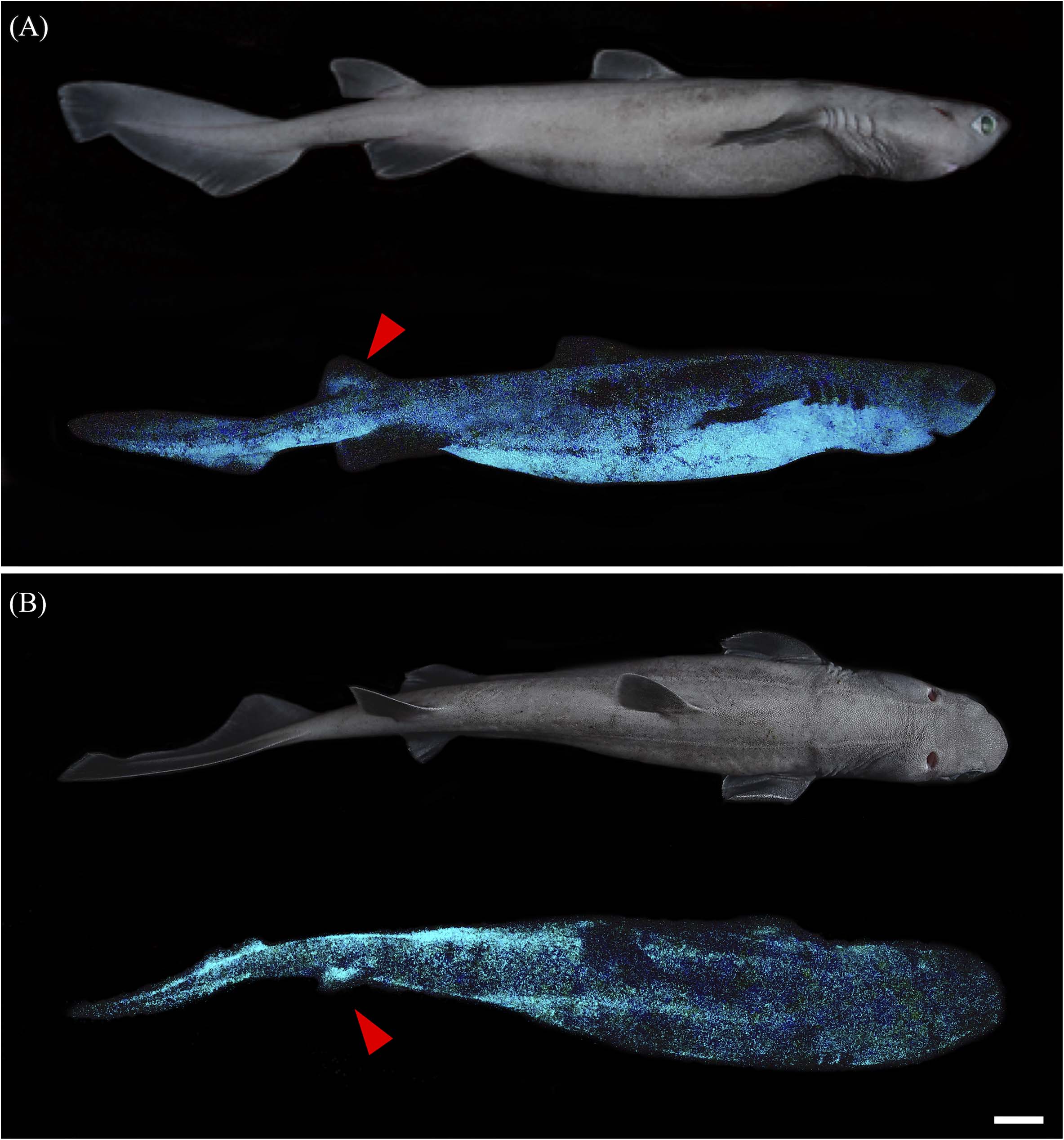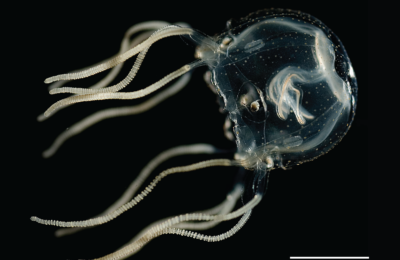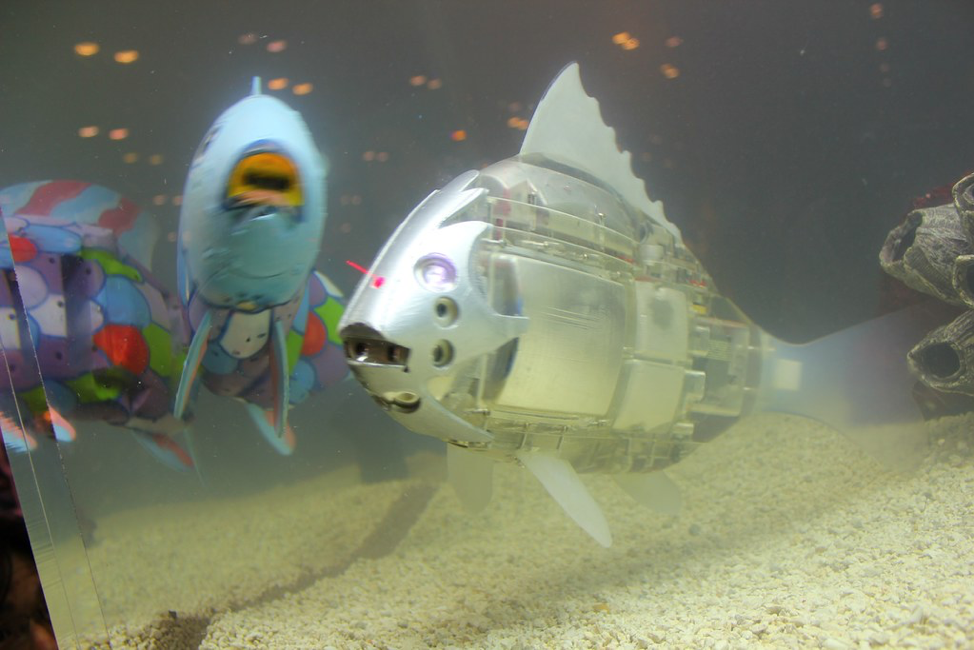Mallefet, J., Stevens, D. W., & Duchatelet, L. (2021). Bioluminescence of the Largest Luminous Vertebrate, the Kitefin Shark, Dalatias licha: First Insights and Comparative Aspects. Frontiers in Marine Science, 8, 153. doi:10.3389/fmars.2021.633582
If you’ve lived in the eastern part of the USA, you may have looked outside on a summer evening and seen the ballet of blinking lights performed by fireflies. For many people, this is their introduction to the world of bioluminescence, or the ability for an organism to produce light. These insects aren’t the only ones to do this, though; in fact, travel into the depths of the ocean, or watch the surface waves on the west coast and you’d see similar dances playing out.
Case in point, the winking lights in the video above are flashlightfish, using the light as signals to swim closer to one another. In waters with low light, bioluminescence can serve many purposes. Need to send a message? Send it in glowing Morse code. Have some spiny defenses? Highlight them in blues and greens. Want to find the right mate? Look for your species’ unique pattern in the next sequence of lights to swim by. It can even help you hide from predators through active camouflage known as counter-illumination.
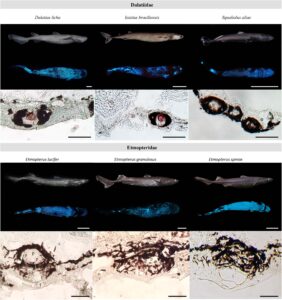
But what if you’re the top dog in the depths? Why use bioluminescence? That’s what an international team of researchers wanted to find out when they brought up three species of shark from the waters around New Zealand, including two lanternshark species and one of the largest species of kitefin shark. Lanternsharks have their name for a reason (their bioluminescent capability was documented back in the 1800s), but the kitefin shark’s abilities were more of a mystery.
Jérôme Mallefet and his team set about comparing and contrasting all the specimens they’d collected, documenting the light-producing organs (photophores) and testing what substances made the organs glow. Inspecting the two lanternshark species revealed their photophores were arranged in a complex pattern along the sides of their bodies, and those on their underbellies near the back fins glowed more brightly. (Fig. 1) From these patterns, it’s possible for lanternsharks to use bioluminescence to identify their own species, as well as members of the opposite sex. As for what chemicals made these photophores glow, lantersharks turned up the brightness and intensity with specific hormones—much like how adrenaline makes humans blush.
When Mallefet’s team turned their attention to the kitefin shark, though, they found a different picture. While the same hormones controlled the dimmer switch on the kitefin shark’s photophores, the flank patterns and highlighting of pelvic fins were missing. The kitefin’s underbelly was uniformly lit, with fewer photophores on its sides. Additionally, while one dorsal fin on its back was lit more brightly than the rest of its body, no attention was being drawn to its pelvic fins. (Fig. 2) This suggests using light solely for counter-illumination, but what predator would kitefin sharks be hiding from when they are some of the largest sharks in the ocean’s twilight zone?
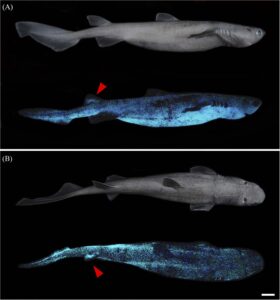
Considering this, Mallefet’s team could form a number of hypotheses as to why the kitefin sharks were so different from other bioluminescent sharks. Kitefin sharks are relatively large (~5.5 ft) and cruise at a very slow pace, and yet they’ve been found with remains of lanternsharks—which have a faster cruising pace—in their stomachs. To catch something with a faster swimming speed requires ambushing it without being seen. It’s therefore possible that kitefin sharks are using the same type of counter-illumination for sneaking up on prey and pouncing once they’re close enough. While more behavioral research would need to be done to confirm this hunting strategy, it’s nevertheless impressive that we have conclusive proof that a large vertebrate is capable of shining its cool, blue light in the dark depths.
I am a former PhD student from the University of Rhode Island, having discovered my love of teaching and informal science education in part through OceanBites! Since departing academia, I’ve focused on creating educational content for visitors at the New England Aquarium, Chincoteague Bay Field Station, and now the National Aquarium. I’ve also dabbled in co-creating a comedy/brainstorming podcast, ThunkTink, and enjoy getting lost in nature with my dogs.

